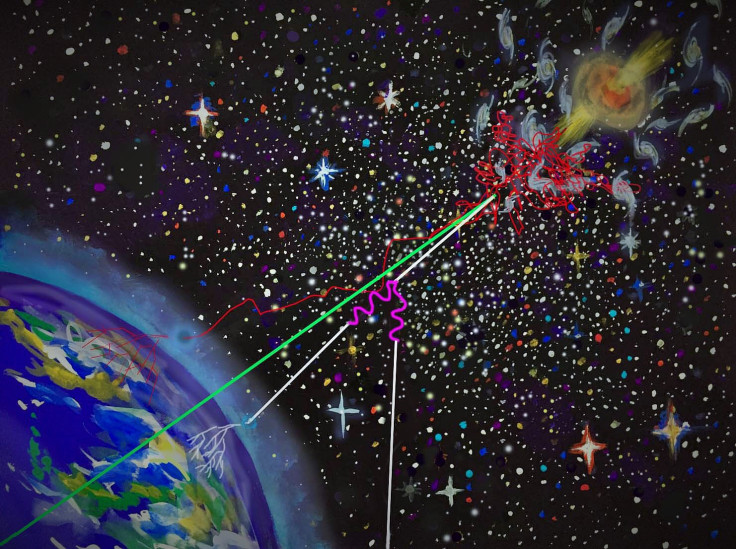Scientists have discovered the origins of the most mysterious particles in the universe
These so-called "cosmic messenger particles" are some of the highest energy particles known to science.

In the field of particle physics, one of the biggest unresolved mysteries of recent times has been the origin of three different types of so-called "cosmic messenger particles" – some of the highest energy particles in the known universe.
While these particles – known as ultrahigh energy cosmic rays, very high energy neutrinos and high energy gamma rays – share common traits, they are distinctly different, meaning scientists have been trying to determine their origins individually.
But now, new research suggests that these mysterious particles may have all been produced by the same phenomenon – supermassive black holes ejecting vast, powerful jets consisting of high energy cosmic rays out into space.
Cosmic rays are subatomic particles that hurtle through space close to the speed of light with energies far higher than the world's most powerful particle accelerators.
Neutrinos, on the other hand, are particles formed at the beginning of the universe and inside stars. They have negligible mass and can pass straight through most normal types of matter in a ghost-like manner.
Meanwhile, gamma rays are a type of radiation consisting of incredibly high energy 'particles' of light known as photons. These high energy photons have the highest electromagnetic energy out of all particles.
To come up with their hypothesis, researchers from Penn State and the University of Maryland developed a unique astrophysical computer model. Their findings are published in the journal Nature Physics.
The new study resolves long-standing inconsistencies in physics and further advances the revolutionary new field of 'messenger astronomy' – the science of these high-energy particles - which is providing researchers with unprecedented insights into the workings of our universe.
"The golden era of multi-messenger particle astrophysics started very recently," said Kohta Murase, an author of the study from Penn State. "Now, all information we can learn from all different types of cosmic messengers is important for revealing new knowledge about the physics of extreme-energy cosmic particles, and a deeper understanding about our universe."





















